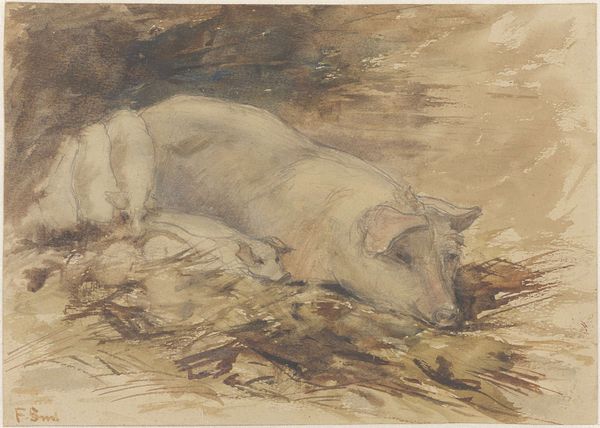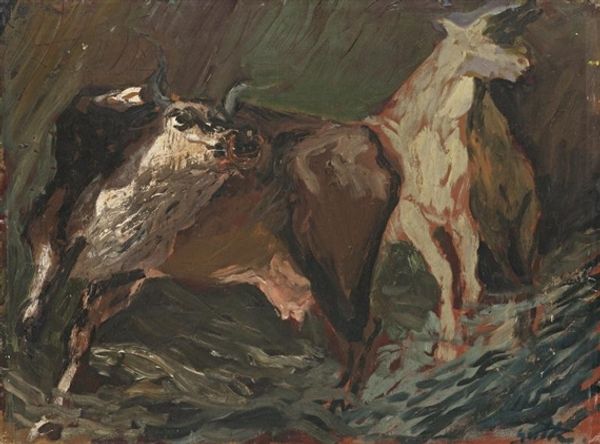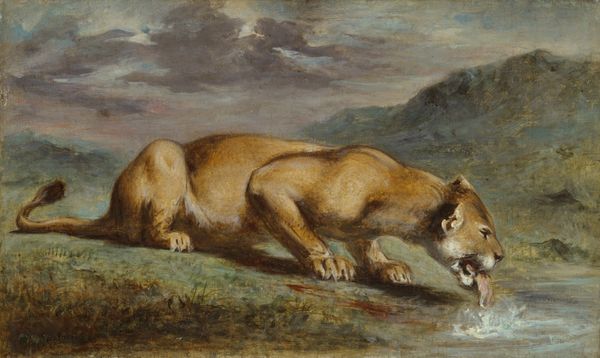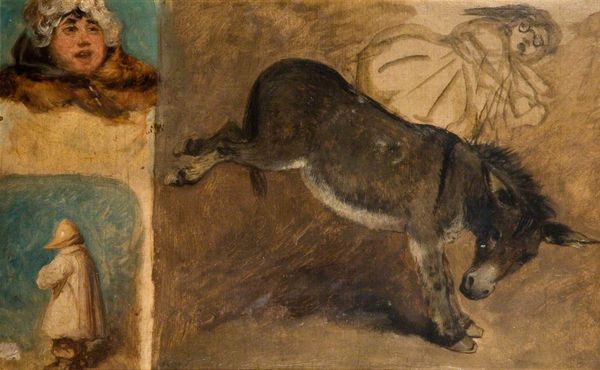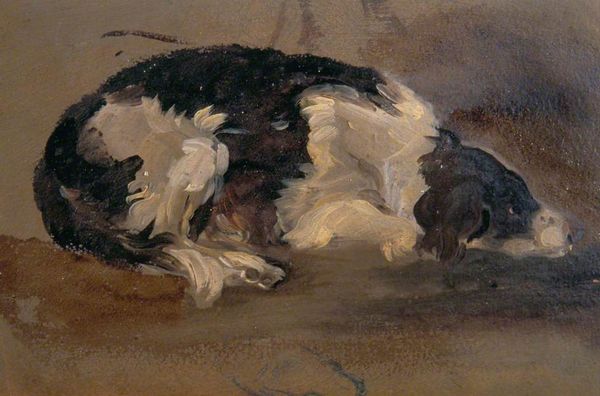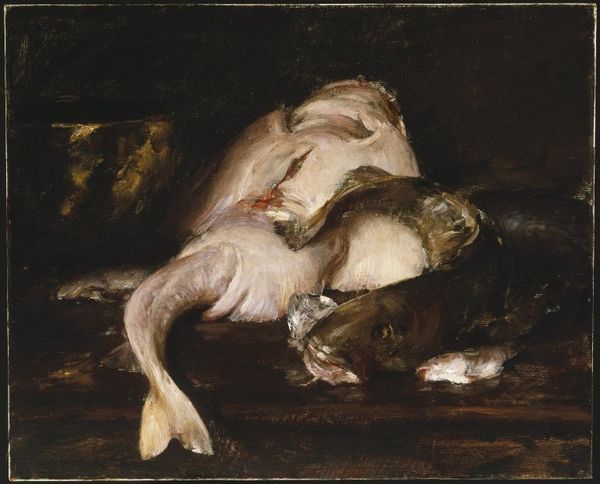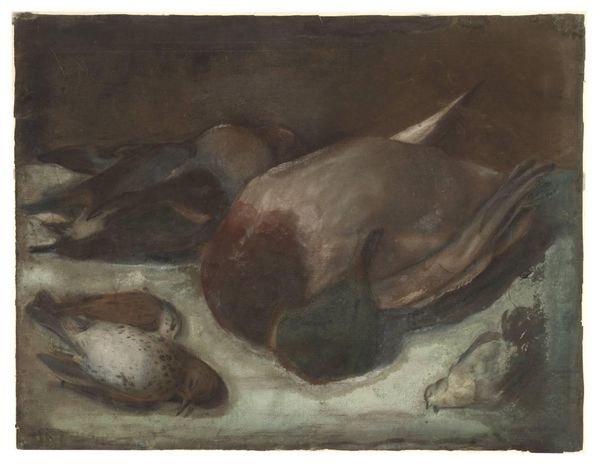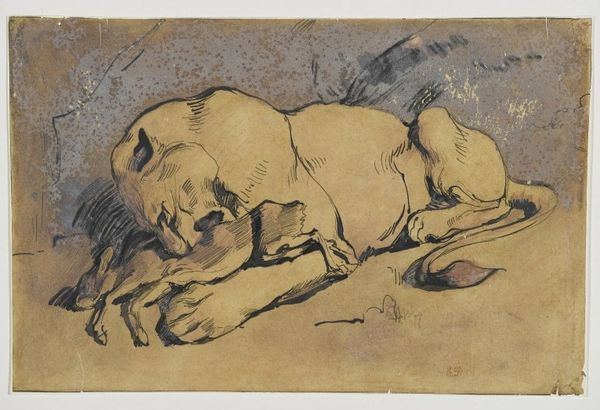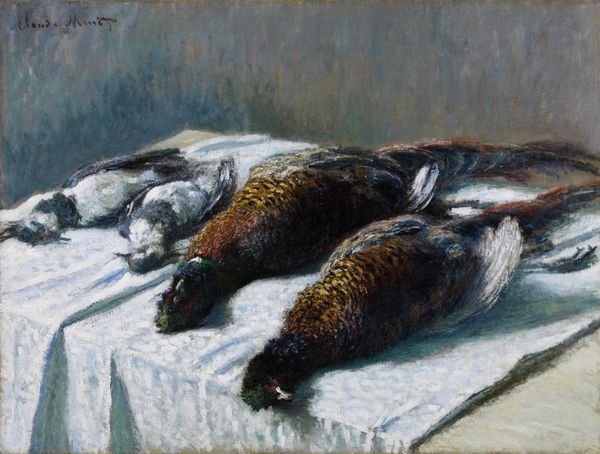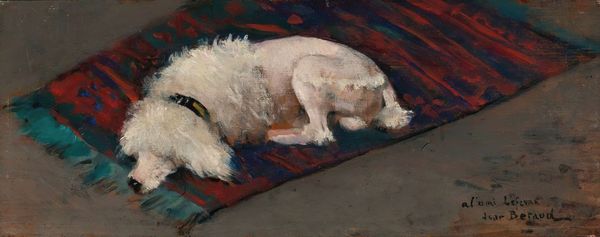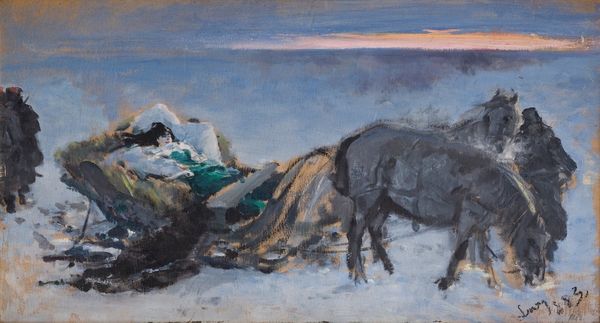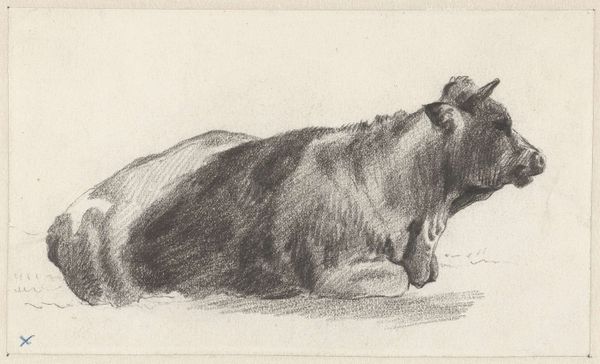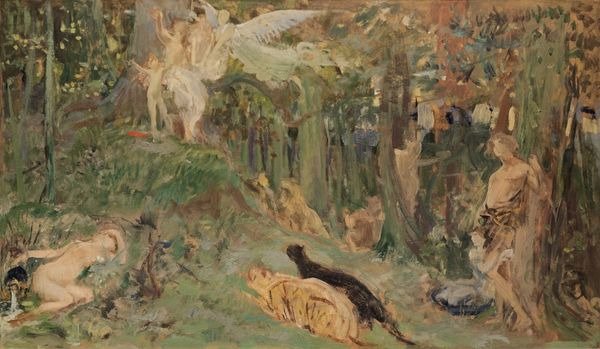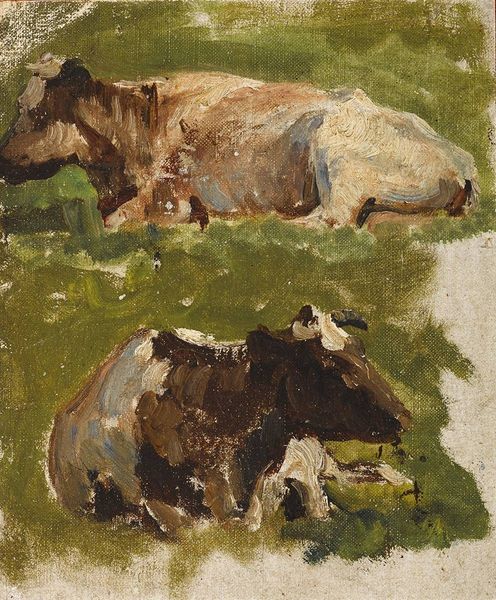
painting, oil-paint
#
portrait
#
animal
#
painting
#
oil-paint
#
landscape
#
oil painting
#
realism
Copyright: Public domain
Curator: Before us, we have "Leżący Koń," or "Lying Horse," an oil-on-canvas artwork crafted in 1854 by Henryk Rodakowski. What's your immediate take on it? Editor: There's a sense of quietude, almost resignation, isn't there? The muted palette, the way the horse is positioned... it's not a majestic steed, more an animal at rest, or perhaps exhaustion. Curator: Rodakowski, though recognized as a portraitist of Polish elites, seemed captivated here by the materiality of rendering animal form and the surrounding landscape with a degree of realism. Observe the density of the paint application. This wasn't about idealization; it's about capturing a specific animal in a specific setting. The thick brushstrokes, the sheer weight of the pigment. He has also presented to us a rare view of a common animal of labour. Editor: That's a great point. This piece comes at a time where depictions of animals, particularly horses, were so deeply linked to power and nobility, and to war and struggle. To see it presented here so unglamorously changes our perspective. It challenges this glorified representation of horses, highlighting the work animals within their socio-economical and material situation. I mean, horses did all the work in agriculture at that time! It also is displayed at a public museum, and therefore is intended to be visible to common society members. Curator: Precisely. The painting’s very existence, its exhibition, subtly shifts the accepted narratives. The material presence of the paint mirrors the physical presence—and, frankly, exploitation—of the animal itself. Editor: I see the museum as also complicit. The socio-political implications of displaying such an artwork—one devoid of nationalistic fervor or aristocratic glorification—speak volumes. Even now! It becomes part of this bigger institutional discussion surrounding social status and the purpose of public space. It asks questions about value and the social meaning of artwork. Who are we as consumers of such an art and its inherent ideas? Curator: Yes, absolutely. The reception of the artwork adds layers to its original making. I believe he was genuinely engaged with understanding animal form within the landscape, even though in the background his portrait practice served quite different patrons! Editor: Exactly! From that point of view, the painting then raises uncomfortable questions on its time and present! An intriguing work indeed. Curator: It certainly is, a valuable view into Rodakowski’s varied approach, in that way.
Comments
No comments
Be the first to comment and join the conversation on the ultimate creative platform.
